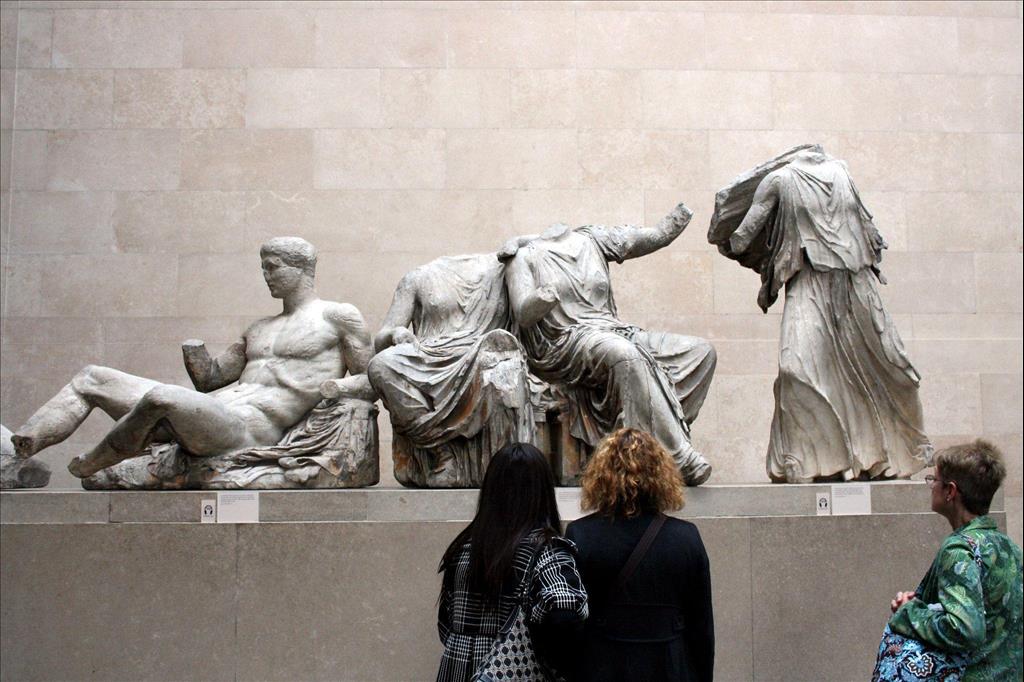
'Despite Being An Ethnic Greek, I Supported Britain's Claim To The Parthenon Marbles—Here Is Why My Position Has Changed'
Born of Greek parents and raised as such in the diaspora, I was always regarded as an ethnic“other”. Decades later, I would be instructed that my British passport did not qualify me as“White British” but as“Any other ethnic background—please specify” on an equality monitoring form. As an ethnic Greek, it was expected that my position would be to return the Parthenon Marbles to Greece, a position that was anathema to me as a museum professional.
If the marble Parthenon sculptures, taken in the early 19th century, were to go back, what would prevent other countries from reclaiming their ancient/antique heritage? On what basis would anything foreign stay in Western museums. How could Western-conceptualised“encyclopaedic museums” present antiquity? And, as if to confirm this scenario, Greece, Italy, Egypt and Turkey are repeatedly demanding the return of some of their antiquities from museum departments that may hold between 30,000 and 90,000 objects, mostly in storage. Turkey (founded in 1923) regards Bronze Age, Greek, Roman and Byzantine and later antiquities found within its borders as its national patrimony.
At Greek weddings, the temperature rose as guests quizzed me on the Parthenon sculptures. I viewed this Greek thinking as a disagreeable manifestation of nationalism. Melina Mercouri's tearful visit to the British Museum's (BM) Duveen gallery in 1983 was just another ploy to pander to nationalist fervour. In 1999, Auberon Waugh wrote that mayoral candidate Ken Livingstone would return the Marbles“to some short-legged, hairy-bottomed foreigners, who have nothing to do with the ancient Athenians but who happen to occupy the space, being descended from Turkish invaders over the centuries”. Since then, DNA analyses reveal common proportions from the same ancestral sources as Mycenaeans, with less subsequent ethnic mixing than previously thought.
Professional societies and museums have increasingly adopted a prohibition on acquiring, borrowing or publishing objects that have left their country of origin, after the 1970 (non-binding) Unesco Convention on the Means of Prohibiting and Preventing the Illicit Import, Export and Transfer of Ownership of Cultural Property. Fakes proliferated so that the prohibition against publication of post-1970 material no longer seemed a strident overreaction. Scholars then turned their attention to pre-1970 amassed assemblages of ancient and ethnographic material of indigenous people. Scholarly reassessment has provided historical insights about imperial and colonial superiority and the“unworthiness” of the claims of conquered people to their artistic heritage or a national identity. This conceit propelled Napoleon to raid art from Italy, Europeans to plunder Africa and China, and Iraq to strip Kuwait's museums (before its own were looted). But we have become savvier about, and more sensitive to, how cultural patrimony entered Western museums.
The Parthenon Marbles do not represent war loot, but rather Greek artistic national patrimony taken in 1801-03 and 1810. The arguments against their return have essentially boiled down to: the British claim of permission from the Ottoman rulers to take them; questionable Greek ethnicity and a patriarchal assessment of Greek incapacity to look after them; British prescience in saving them; that their return would not reunite them with the architecture but move them from one museum to another; and the expedient legal device that they cannot be deaccessioned (although legislation renders this possible for Nazi loot). Geoffrey Robertson QC reminds us that Elgin misrepresented to the Commons Select Committee of 1816 his permission to draw and take casts as a legal firman to remove them from the temple. He never“bought” the sculptures from the occupiers (bribes do not count), so the marbles were never his to sell. Elgin's argument that he saved them from destruction could not function in English law, wherein a thief cannot avoid conviction by arguing that he took better care of the stolen goods than the owner.
International human rights, improved by the UN Declaration on the Rights of Indigenous Peoples (2007), acknowledge a community's right to its cultural patrimony. Greece was recognised as an independent nation in 1832 and made repeated early requests for the return of the Marbles; its Archaeological Service was created in 1835. The arguments against the return of the Marbles are no longer tenable. Since 2009 the spectacular Acropolis Museum with its direct sightline of the Parthenon, contextualises the sculptural decoration in a way that the BM never can. Just as Sutton Hoo represents English cultural patrimony, so too the Parthenon Marbles represent the cultural patrimony of Greece. Precision copies may reliably replace the originals in the Duveen gallery.
• Eleni Vassilika was the keeper of antiquities, Fitzwilliam Museum (1990-2000); director and chief executive of the Roemer- und Pelizaeus-Museum (2000-05); and director, Museo Egizio di Torino (2005-14)

Legal Disclaimer:
MENAFN provides the
information “as is” without warranty of any kind. We do not accept
any responsibility or liability for the accuracy, content, images,
videos, licenses, completeness, legality, or reliability of the information
contained in this article. If you have any complaints or copyright
issues related to this article, kindly contact the provider above.





















Comments
No comment